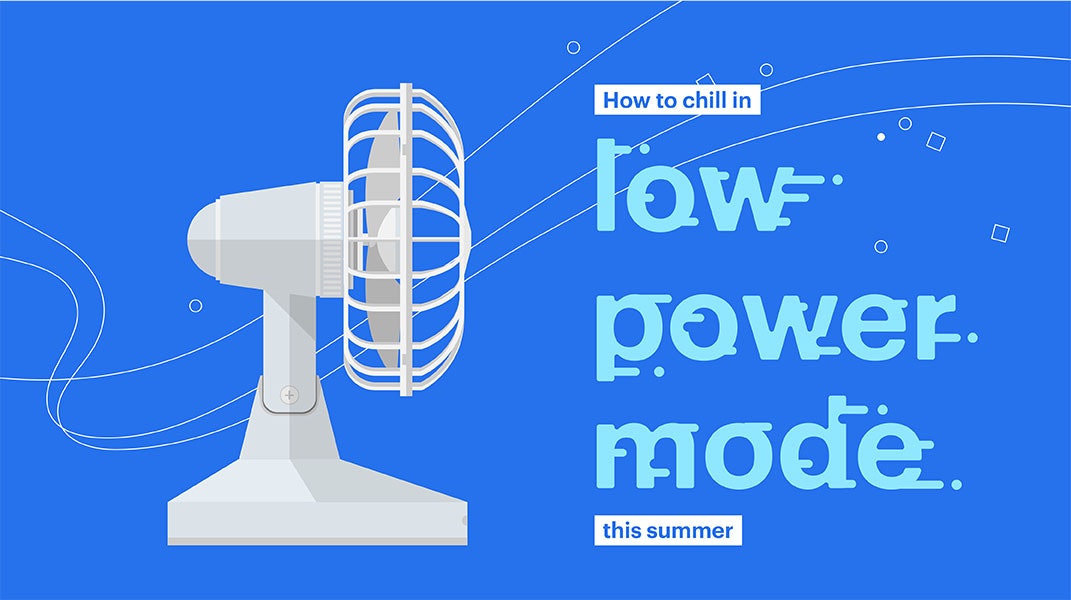Six ways to save money on your power bill this summer

Energy use in the US has fallen to a 16-year low as travel and industrial activity slow and offices remain shut. But residential energy rates are quietly increasing; we’re spending more time at home than ever, giving our computers, TVs, and appliances more use than they’ve seen before.
As the houses we’re stuck in get hotter this summer, our energy bills will climb. But with a few simple steps, you can prevent any unexpected spikes. According to US Department of Energy estimates, more than half of home energy use is devoted to heating and cooling, which means that being careful about regulating temperatures can go a long way toward keeping bills low. Here are six ways to keep your house cool and energy use efficient while on lockdown this summer.
#1. Be careful what (and when) you cook
Your kitchen can quickly become the hottest part of your house during the summer; according to some estimates, using your stove and oven simultaneously can raise the room’s temperature by a whopping 10 degrees, leaving you little choice but to put your fan on full blast. But being conscious of when and how you use your kitchen can make a dent in your utility bill. Try sticking to “cold” meals such as salads, which don’t require heat to prepare. Heat up leftovers in the microwave rather than on the stove. And save baking or meal prep that requires the oven for the coolest parts of the day — the early morning and late evening. Better yet, if you have a grill, take your meals outside; you’ll avoid overheating your kitchen altogether.
#2. Wash laundry wisely
Doing laundry is expensive, even in-house. If you’re careful about how (and how often) you use your washer and dryer, however, you can see a big difference on your energy bill. For starters, try to use cooler settings on your washer wherever possible; 80-90% of the energy your washing machine uses goes toward heating the water, so the cooler you keep it, the better. And if possible, forego the dryer entirely; line-dry your clothes instead. Tumble dryers are an energy suck and will only make your house feel warmer, leaving you more and more tempted to turn up the air conditioning. Line drying, on the other hand, will cut the carbon footprint of each load of laundry you do by around 80%. For any items you simply can’t air-dry, allocate them to a single load, and toss a clean, dry towel in the mix — it’ll wick away any excess moisture from your clothing, shorten drying times, and save you an estimated $27 per year.
#3. Keep your windows covered, but open
Large windows make any room feel more inviting. In the heat of summer, however, they do little to help your energy bill. On the hottest days, regulating both the sun and airflow around your windows can be a game-changer for household temperatures. Try keeping your blinds closed during the hottest hours of the day, between 2 and 7 p.m. (if you’re like us, you might find it difficult, even mood-dampening, to hang out in a dark room, but it’ll change how cool your house feels, so weigh your options accordingly). Be strategic about leaving your windows open, too; as a general rule, it’s best to cool your house naturally for as long as you can before resorting to using your A/C. If it becomes unbearably hot, the A/C can go on, but make the most of it by closing all windows and doors to any rooms you aren’t using (no need to waste energy cooling a room you aren’t in).
#4. Keep (your water) cool
For the same reason that heating the water in your washer is an energy suck, heating the water used throughout your home is an energy suck. In fact, water heating accounts for an estimated 17% of your home’s electricity use. Even worse, the Department of Energy estimates that 80 to 90% of this energy ends up going down the drain. This summer, be conscious about how often you take hot showers or how long you leave the water running. Reducing the temperature a little can go a long way, as can cutting the time you’re in the shower. For maximum savings, turn down your water heater altogether; even a 15-degree difference on a 50-gallon tank can save more than $50 per year.
#5. Give your A/C the love it deserves
Before summer kicks into full gear, it’s worth giving your air conditioning system a good look. Check the filter for dust and debris, which can slow things down and require more energy for the same amount of cooling. As a general rule, you should be changing your filter every three months, so stock up on a few to avoid making multiple trips to the store down the line. And when you’re running your A/C, make the most of it: close all windows and doors to unused rooms. You want to make sure you’re cooling high-priority areas, not closets, guest rooms, or worse, the outdoors.
#6. Stick with LED light bulbs
As a general rule, using energy-efficient appliances is always best practice for greening your home. But with stores closed and finances tight for many, it’s not realistic to expect anyone to revamp their appliance set to save a few bucks on utilities. Instead, focus on making a difference where you can: light bulbs are a small, albeit necessary cost, and chances are, you’re going through them more quickly than usual while spending more time at home under lockdown. So next time you stock up, stick to LEDs. They last 50 times longer than traditional bulbs and use just 25% of the energy. Better yet, they don’t give off as much heat: incandescents can turn 90% of the energy they use into heat, which will only make a warm room feel warmer.
